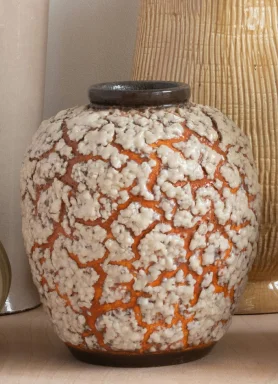

FOLLOW US ON INSTAGRAM

eleanor_Pena



Handicrafts are not only a reflection of the skill and creativity of artisans but also tell stories of culture, history, and the identity of various nations. These authentic arts are rooted in the traditions and beliefs of people from different lands, and over time, they have found a special place within societies. From intricate and colorful works to simple and functional items, each piece showcases the beauty and hidden values of handicrafts.
### Definition of Handicrafts
Handicrafts refer to items produced manually using simple tools by one or more skilled artisans. In these pieces, the spirit and emotion of the artist are clearly visible, and since they are crafted with great care and attention, each one is unique and irreplaceable. This uniqueness makes handicrafts more than just physical objects, turning them into symbols of culture and art within a community.
### History of Handicrafts
Handicrafts have evolved along with human history and have experienced changes in line with social and cultural conditions in each era. In Iran, handicrafts have always played an essential role in people's lives, from ancient times to the present day. From pottery and carpet weaving to marquetry and enamel work, each of these arts is rooted in the history and culture of Iran and signifies the ingenuity and creativity of Iranian artisans.
### Types of Handicrafts
Handicrafts around the world can be classified into various categories. Some of the most well-known types include:
- **Ceramics and Pottery**: Including various types of dishes and decorative items made from clay and soil.
- **Textiles**: Such as carpets, rugs, kilims, and handwoven fabrics created using natural or synthetic threads.
- **Woodcraft and Carving**: Items made of wood with raised patterns and motifs.
- **Metalwork**: Including copperware, engravings, and metal jewelry.
- **Leatherwork**: Consisting of bags, shoes, and various products made from leather.
### The Role of Handicrafts in the Economy
Handicrafts are not only considered part of the art and culture of each country but also play an important role in the economy of communities. These arts can contribute to the economic development of various regions by creating employment and income for artisans and craftsmen. Additionally, the export of handicrafts serves as a source of foreign revenue for countries, and many nations help grow their economies by introducing and promoting their products in global markets.
### Challenges and Opportunities for Handicrafts
Despite all the beauty and values that handicrafts possess, they face many challenges. Lack of sufficient support for artisans, limited access to sales markets, and imitation of original works are some of the issues threatening this field. On the other hand, increasing public awareness of the importance and value of handicrafts, the development of online platforms for product sales, and the creation of local exhibitions and marketplaces can provide new opportunities for the growth of this art.
### The Future of Handicrafts
With growing global attention to environmental issues and sustainable production, handicrafts can find a special place in the future. These products, which are often made with natural materials and minimal environmental impact, can serve as alternatives to industrial and mass-produced goods. Moreover, the younger generation’s interest in learning and preserving traditional arts signals a revival of handicrafts and their integration into modern lifestyles.
In conclusion, handicrafts are not only art but also a symbol of love and effort by artisans who create beauty with their hands. These arts deserve greater attention and support to remain alive and be passed down to future generations. By supporting handicrafts, we are not only helping artisans but also taking a step towards preserving our cultural heritage and identity.





